Sadly, this was to be our last day in Sicily and Fiorella and Nuncio took us on a day trip to Taormina.
On arrival we dropped into a cafe for breakfast
. Four Granita's, Four Brioche and a bottle of sparkling water. €40, what a rip off! Especially when we have been paying €2.50 each over the past three weeks. This place is geared up for the tourists, what a trap and what prices!
We stop at Piazza IX Aprile, we there are some great views and the wonderful Baroque Fountain (1635)
We continued walking up the main drag, passing many boutiques, passing the main square, the Duomo of Taormina (13th century BC), The Corvaja Palace (10th Centuary), past Piazza Badia until we finally come to Teatro Greco.
This Greek Amphitheatre was built in the 7th century BC. Built for the most part of brick, and is therefore probably of Roman date, though the plan and arrangement are in accordance with those of Greek, rather than Roman, theatres; whence it is supposed that the present structure was rebuilt upon the foundations of an older theatre of the Greek period. With a diameter of 120 metres (after an expansion in the 2nd century), this theatre is the second largest of its kind in Sicily (after that of Syracuse); it is frequently used for operatic and theatrical performances and for concerts
. The greater part of the original seats have disappeared, but the wall which surrounded the whole cave-a is preserved, and the proscenium with the back wall of the scena and its appendages, of which only traces remain in most ancient theatres, are here preserved in singular integrity, and contribute much to the picturesque effect, as well as to the interest, of the ruin. From the fragments of architectural decorations still extant we learn that it was of the Corinthian order, and richly ornamented. Some portions of a temple are also visible, converted into the church of San Pancrazio, but the edifice is of small size.
Many of these mountain top towns were built on hill tops, not only for their vantage points and great views, but so they could defend their cities in the rise of an attack.
The area around Taormina was inhabited by the Siculi even before the Greeks arrived on the Sicilian coast in 734 BC to found a town called Naxos
. The theory that Taormina was founded by colonists from Naxos is confirmed by Strabo and other ancient writers.The new settlement seems to have risen rapidly to prosperity, and was apparently already a considerable town at the time of Timoleon's expedition in 345 BC. It was the first place in Sicily where that leader landed, having eluded the vigilance of the Carthaginians, who were guarding the Straits of Messina, and crossed direct from Rhegium (Reggio di Calabria) to Taormina. The city was at that time still under the government of Andromachus, of whose mild and equitable administration is said to have presented a strong contrast with that of the despots and tyrants of the other Sicilian cities. He welcomed Timoleon with open arms, and afforded him a secure resting place until he was enabled to carry out his plans in other parts of Sicily. Andromachus was not deprived of his position of power when all the other tyrants were expelled by Timoleon, but was permitted to retain it undisturbed till his death.Little is recorded about Taormina for some time after this
. It is probable that it passed under the authority of Agathocles, who drove the historian Timaeus into exile; and some time after this it was subject to a domestic despot of the name of Tyndarion, who was contemporary with Hicetas of Syracuse and Phintias of Agrgentum. Tyndarion was one of those who concurred in inviting Pyrrhus into Sicily (278 BC), and when that monarch landed with his army at Taormina, joined him with all his forces, and supported him in his march upon Syracuse. A few years later we find that Taormina had fallen into the power of Hieron of Syracuse and was employed by him as a stronghold in the war against the Mamertines. It was also one of the cities which was left under his dominion by the treaty concluded with him by the Romans in 263 BC.
There is no doubt that Taormina continued to form a part of the kingdom of Syracuse until the death of Hieron, and that it only passed under the government of Rome when the whole island of Sicily was reduced to a Roman province; but we have scarcely any account of the part it took during the Second Punic War, though it would appear, from a hint in Appian, that it submitted to Marcellus on favourable terms; and it is probable that it was on that occasion it obtained the peculiarly favoured position it enjoyed under the Roman dominion
. For we learn from Cicero that Taormina was one of the three cities in Sicily which enjoyed the privileges of a civitas foederata or allied city, thus retaining a nominal independence, and was not even subject, like Messina, to the obligation of furnishing ships of war when called upon. The city, however, suffered severe calamities during the Sevile War in Sicily (134–132 BC), having fallen into the hands of the insurgent slaves, who, on account of the great strength of its position, made it one of their chief posts, and were able for a long time to defy the arms of the consul Publius Rublius. They held out until they were reduced to the most fearful extremities by famine, when the citadel was at length betrayed into the hands of the consul by one of their leaders namedSarapion, and the whole of the survivors put to the sword.Taormina again played a conspicuous part during the wars of Sextus Pompeius in Sicily, and, from its strength as a fortress, was one of the principal points of the position which he took up in 36 BC, for defence against Octavian. It became the scene also of a sea-fight between a part of the fleet of Octavian, commanded by the triumvir in person, and that of Pompeius, which terminated in the defeat and almost total destruction of the former. In the settlement of Sicily after the defeat of Pompeius, Taormina was one of the places selected by Augustus to receive a Roman Colony, probably as a measure of precaution, on account of the strength of its situation, as we are told that he expelled the former inhabitants to make room for his new colonists. Strabo speaks of it as one of the cities on the east coast of Sicily that was still subsisting in his time, though inferior in population both to Messina and Catania. Both Pliny and Ptolemy assign it the rank of a colonia, and it seems to have been one of the few cities of Sicily that continued under the Roman Empire to be a place of some consideration. Its territory was noted for the excellence of its wine and produced also a kind of marble which seems to have been highly valued. Juvenal also speaks of the sea off its rocky coast as producing the choicest mullets. The Itineraries place Taormina 32 miles from Messina, and the same distance from Catania. After the fall of the Western Roman Empire, Taormina continued to rank as one of the more important towns of Sicily, and because of the strength of its position was one of the last places that was retained by the Eastern Modern emperors, but it was taken by the Arabs in 902 after a siege of two years. Taormina was renamed "Al-Muizzia" in honour of Imam al-Muizz, who was a Fatimid Caliph (reigned 953–75). Muslim rule of the town lasted until 1078, when it was captured by theNorman count Roger I of Sicily.
After the fall of the Normans and of their heirs, the Hohenstaufen, Taormina followed the history of Sicily under the Angevins and then the Crown of Aragon
. In 1410 King Martin ll of Sicily was elected here by the Sicilian Parliament. Later Taormina was under Spanish suzerainty, receiving the status of "city" in the 17th century.In 1675 it was besieged by the French, who had occupied Messina. Under the Bourbons dynasty of the Kingdom of Two Sicilies, Taormina did not have a relevant role; however, it obtained an easier access when part of the Catrabico promontory was partially cut and a seaside road connecting it to Messina and Catania was created. It received also a station on the second-oldest railroad in the region. Starting from the 19th century Taormina became a popular tourist resort in the whole of Europe.
For lunch we joined Aunty Mary and the Pulvirenti cousins. Irene had gone to so much trouble with a feast fit for a King and his subjects. After lunch we said goodbye to our cousins and returned to Zafferana to finish of packing our bags.
On the trip back, we stopped to refuel, I noticed that, here in Sicily they still serve you and fill up your tank of fuel, where as in Australia it has been self serve for a long time.
Cousins Giovanna, Vera and Federica dropped by to bid us farewell.
Fiorella and Nuncio ordered some take away pizza, before relaxing and retiring for the night.
Delights of Taormina
Sunday, August 28, 2011
 Taormina, Sicily, Italy
Taormina, Sicily, Italy
Other Entries
-
6From the Infinity Pool to the Party!
Aug 1117 days prior Santa Tecla Di Acireale, Italyphoto_camera5videocam 0comment 1
Santa Tecla Di Acireale, Italyphoto_camera5videocam 0comment 1 -
7Hanging around with Saro and Pina.
Aug 1216 days prior Catania, Italyphoto_camera4videocam 0comment 1
Catania, Italyphoto_camera4videocam 0comment 1 -
8Oh yes, Granita, Granita, Granita!!!
Aug 1315 days prior Aci Castello, Italyphoto_camera5videocam 0comment 0
Aci Castello, Italyphoto_camera5videocam 0comment 0 -
9Freezing waters of Gole Alacantara
Aug 1414 days prior Francavilla di Sicilia, Italyphoto_camera6videocam 0comment 0
Francavilla di Sicilia, Italyphoto_camera6videocam 0comment 0 -
10Swimming in the Ionian Sea
Aug 1513 days prior Stazzo, Italyphoto_camera3videocam 0comment 0
Stazzo, Italyphoto_camera3videocam 0comment 0 -
11Road Trip to Ragusa Ilba
Aug 1612 days prior Ragusa Ibla, Italyphoto_camera15videocam 0comment 0
Ragusa Ibla, Italyphoto_camera15videocam 0comment 0 -
12To Shop or Not To Shop, That is the Question!
Aug 1711 days prior Acireale, Italyphoto_camera6videocam 0comment 0
Acireale, Italyphoto_camera6videocam 0comment 0 -
13From Beach to Mountain and into a Cock Bar
Aug 1810 days prior Castelmola. , Italyphoto_camera9videocam 0comment 2
Castelmola. , Italyphoto_camera9videocam 0comment 2 -
14Hiking Etna.
Aug 199 days prior Nicolosi, Italyphoto_camera16videocam 0comment 4
Nicolosi, Italyphoto_camera16videocam 0comment 4 -
15A World of Ceramics
Aug 208 days prior Caltagirone, Italyphoto_camera13videocam 0comment 0
Caltagirone, Italyphoto_camera13videocam 0comment 0 -
16Welcome to Sicily Peter Selar
Aug 217 days prior Zafferana Etnea, Italyphoto_camera2videocam 0comment 1
Zafferana Etnea, Italyphoto_camera2videocam 0comment 1 -
17Good Company and Good Food.
Aug 226 days prior Santa Tecla di Acireale, Italyphoto_camera2videocam 0comment 0
Santa Tecla di Acireale, Italyphoto_camera2videocam 0comment 0 -
18Peter visits Acireale
Aug 235 days prior Acireale, Italyphoto_camera17videocam 0comment 1
Acireale, Italyphoto_camera17videocam 0comment 1 -
19Temples of Gods
Aug 244 days prior Agrigento, Italyphoto_camera21videocam 0comment 1
Agrigento, Italyphoto_camera21videocam 0comment 1 -
20Chill Out & Shopping
Aug 253 days prior Acireale, Italyphoto_camera4videocam 0comment 0
Acireale, Italyphoto_camera4videocam 0comment 0 -
21Checking out the sights with Aunty Mary & Cousins
Aug 262 days prior Aci Trezza, Italyphoto_camera20videocam 0comment 0
Aci Trezza, Italyphoto_camera20videocam 0comment 0 -
22Time Is Running Out!
Aug 271 day prior Acireale, Italyphoto_camera12videocam 0comment 1
Acireale, Italyphoto_camera12videocam 0comment 1 -
23Delights of Taormina
Aug 28 Taormina, Italyphoto_camera13videocam 0comment 4
Taormina, Italyphoto_camera13videocam 0comment 4 -
24Transit to Montepulciano
Aug 291 day later Montepulciano, Italyphoto_camera25videocam 0comment 0
Montepulciano, Italyphoto_camera25videocam 0comment 0 -
25The Journey Begins
Aug 302 days later Pienza, Italyphoto_camera22videocam 0comment 0
Pienza, Italyphoto_camera22videocam 0comment 0 -
26Immersing The Body in the Thermal Springs.
Aug 313 days later Bagno Vignoni, Italyphoto_camera11videocam 0comment 1
Bagno Vignoni, Italyphoto_camera11videocam 0comment 1 -
27From Thermal Springs to Chants in an Abbey.
Sep 014 days later Montalcino, Italyphoto_camera15videocam 0comment 4
Montalcino, Italyphoto_camera15videocam 0comment 4 -
28Tranquility and Peace.
Sep 025 days later Buonconvento, Italyphoto_camera8videocam 0comment 0
Buonconvento, Italyphoto_camera8videocam 0comment 0 -
29Beautiful Abbey and Gardens
Sep 036 days later Buonconvento, Italyphoto_camera13videocam 0comment 0
Buonconvento, Italyphoto_camera13videocam 0comment 0 -
30Three Remain, Eight Moved On.
Sep 047 days later Murlo, Italyphoto_camera22videocam 0comment 0
Murlo, Italyphoto_camera22videocam 0comment 0 -
31Beautiful Siena
Sep 058 days later Siena, Italyphoto_camera10videocam 0comment 0
Siena, Italyphoto_camera10videocam 0comment 0 -
32Another day of Churches!
Sep 069 days later Siena, Italyphoto_camera11videocam 0comment 2
Siena, Italyphoto_camera11videocam 0comment 2 -
33Goodbye Siena, Hello Milano.
Sep 0710 days later Milan, Italyphoto_camera2videocam 0comment 0
Milan, Italyphoto_camera2videocam 0comment 0 -
34Exploring Milano, the Fashion Capital.
Sep 0811 days later Milan, Italyphoto_camera14videocam 0comment 0
Milan, Italyphoto_camera14videocam 0comment 0 -
35Chilling Out in Milan
Sep 0912 days later Milan, Italyphoto_camera3videocam 0comment 1
Milan, Italyphoto_camera3videocam 0comment 1 -
36Road Trip.
Sep 1013 days later Pieve Emanuele, Italyphoto_camera3videocam 0comment 0
Pieve Emanuele, Italyphoto_camera3videocam 0comment 0 -
37From the Table to the Nudist Beach.
Sep 1114 days later Milan, Italyphoto_camera1videocam 0comment 1
Milan, Italyphoto_camera1videocam 0comment 1 -
38All Roads Lead to Rome
Sep 1215 days later Rome, Italyphoto_camera2videocam 0comment 1
Rome, Italyphoto_camera2videocam 0comment 1 -
39Discovering Rome.
Sep 1316 days later Rome, Italyphoto_camera15videocam 0comment 4
Rome, Italyphoto_camera15videocam 0comment 4 -
40Ancient Rome
Sep 1417 days later Rome, Italyphoto_camera16videocam 0comment 2
Rome, Italyphoto_camera16videocam 0comment 2 -
41Last Day in Rome
Sep 1518 days later Rome, Italyphoto_camera17videocam 0comment 3
Rome, Italyphoto_camera17videocam 0comment 3

 Taormina, Sicily, Italy
Taormina, Sicily, Italy






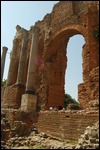
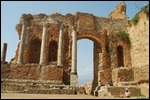
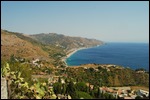


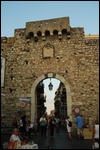
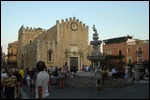
2025-05-22